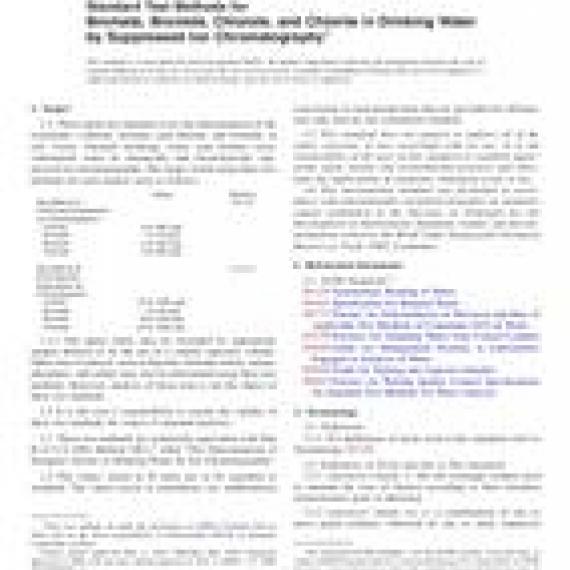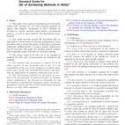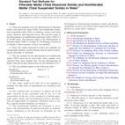No products
ASTM D6581-18
ASTM D6581-18 Standard Test Methods for Bromate, Bromide, Chlorate, and Chlorite in Drinking Water by Suppressed Ion Chromatography
standard by ASTM International, 05/01/2018
Full Description
1.1These multi-test methods cover the determination of the oxyhalides-chlorite, bromate, and chlorate, and bromide, in raw water, finished drinking water and bottled (non-carbonated) water by chemically and electrolytically suppressed ion chromatography. The ranges tested using these test methods for each analyte were as follows:
| Range | Sections | |
| Test Method A: | 8 to 20 | |
| Chlorite | 5 to 500 g/L | |
| Bromate | 1 to 25 g/L | |
| Bromide | 5 to 250 g/L | |
| Chlorate | 5 to 500 g/L | |
| Test Method B: | 21 to 31 | |
| Chlorite | 20 to 1000 g/L | |
| Bromate | 1 to 30 g/L | |
| Bromide | 20 to 200 g/L | |
| Chlorate | 20 to 1000 g/L |
1.1.1The upper limits may be extended by appropriate sample dilution or by the use of a smaller injection volume. Other ions of interest, such as fluoride, chloride, nitrite, nitrate, phosphate, and sulfate may also be determined using these test methods. However, analysis of these ions is not the object of these test methods.
1.2It is the users responsibility to ensure the validity of these test methods for waters of untested matrices.
1.3These test methods are technically equivalent with Part B of U.S. EPA Method 300.1,2 titled The Determination of Inorganic Anions in Drinking Water by Ion Chromatography.
1.4The values stated in SI units are to be regarded as standard. The values given in parentheses are mathematical conversions to inch-pound units that are provided for information only and are not considered standard.
1.5This standard does not purport to address all of the safety concerns, if any, associated with its use. It is the responsibility of the user of this standard to establish appropriate safety, health, and environmental practices and determine the applicability of regulatory limitations prior to use.
1.6This international standard was developed in accordance with internationally recognized principles on standardization established in the Decision on Principles for the Development of International Standards, Guides and Recommendations issued by the World Trade Organization Technical Barriers to Trade (TBT) Committee.


































